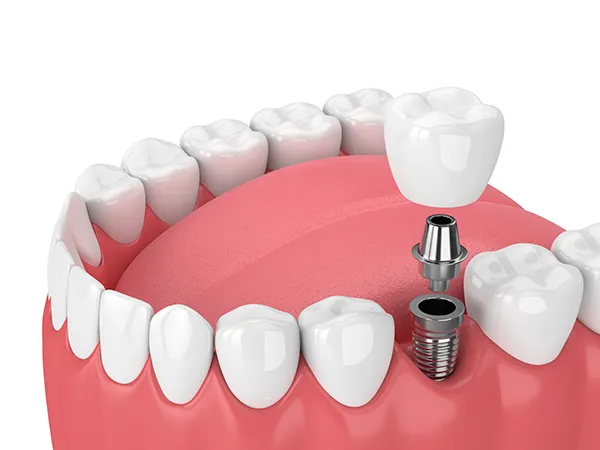Titanium Dental Implants For patients with missing teeth, there are several choices available for tooth replacement. One of the most popular and most successful is titanium dental implants. A dental implant, also referred to as a skeletal implant or attachment, is an oral prosthesis that connects to the jaw or skull bone to sustain an oral prosthesis; for example, a bridge, denture, or crown, or to function as an orthodonture. For patients with missing teeth, there are several choices available for tooth replacement. One of the most popular and most successful is titanium dental implants. A dental implant, also referred to as a skeletal implant or attachment, is an oral prosthesis that connects to the jaw or skull bone to sustain an oral prosthesis; for example, a bridge, denture, or crown, or to function as an orthodonture. Why Titanium?The foundation for modern oral implants is osseointegration, where materials like titanium form a special connection with the dental bone. The implant fixture is installed first to ensure that it will osseointegrate, meaning fuse with the jawbone. Titanium is a biocompatible material that does this well, and unlike some other metals, does not cause allergies. After the titanium implant fuses with the jawbone, then a dental prosthesis such as a crown, abutment, or denture, is attached. Osseointegration may take a fair amount of time, usually several months. To receive dental implants, visit Durham Prosthodontics. Dental Implant ProcedureA dental implant procedure typically kicks off with a thorough visual and technical examination of the dental region being considered for the operation. The dentist inspects the oral area visually and uses X-rays or CT scans. This enables the dentist to assess the quality and quantity of the bone structure and readies it for installation. This could involve placing a synthetic bone, an alveolar bone graft, to achieve a solid implant foundation. Once the site is considered efficient, the implant procedure can commence. Usually, a dental implant procedure will require a tooth extraction before the implant is placed. A sinus lift may also be necessary if the implant site is in the posterior region with limited bone space. Every procedure is done under anesthesia or sedation. If bone grafting has been done, the patient must return for the actual implant surgery sometime after the site has healed. The temporary denture may be placed on the implant to alveolar bone and drilled with special dental tools during the implant appointment surgery. The implant titanium post is secured in place. The dentist caps the implant and stitches up the incision on the gum line. The site has to be allowed time to heal, and a temporary denture may be placed on the implant for aesthetic and functional purposes. Healing solely depends on the bone quality and usually takes between two to six months. This allows time for the implant to osseointegrate. Follow-up appointments are recommended to ensure healing is ensuing smoothly. Healing time has elapsed, and the implant needs to be checked to whether it has efficiently integrated with the jawbone. Once this has been assured, the dentist connects a prosthetic abutment to the implant. The abutment functions as the crown or replacement denture support. An imprint of the abutment is taken in the mouth, and the mold is sent to the lab for a custom-fit crown to be made. The crown is then cemented on the abutment. Routine dental hygiene practices are recommended to ensure the implant lasts long, and oral health is in perfect condition. Let us help you achieve your desired look by visiting us at Durham Prosthodontics or calling us at (919) 489-8661. |

Contact Information3709 University Dr Suite D Durham, NC 27707-6224 (919) 489-8661 info@mydurhamdentist.com Follow Us |